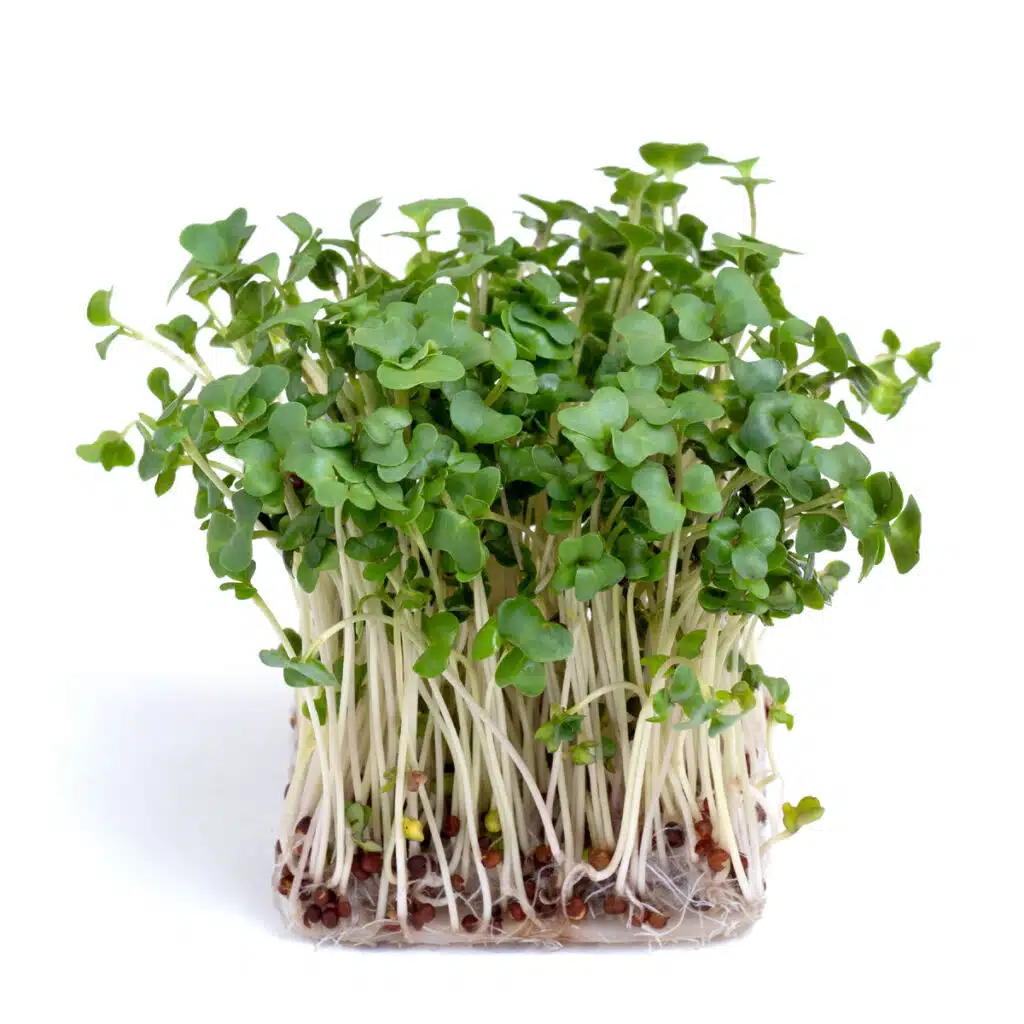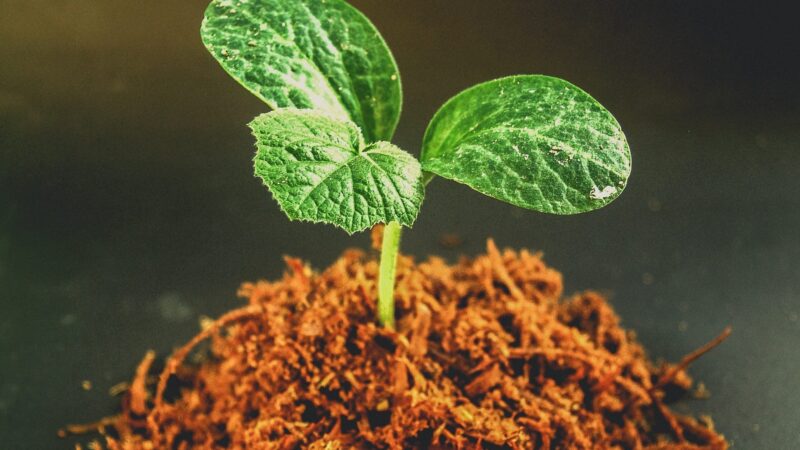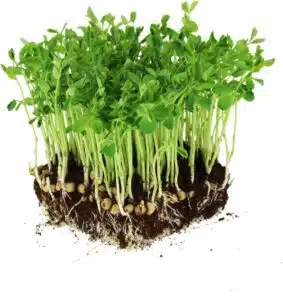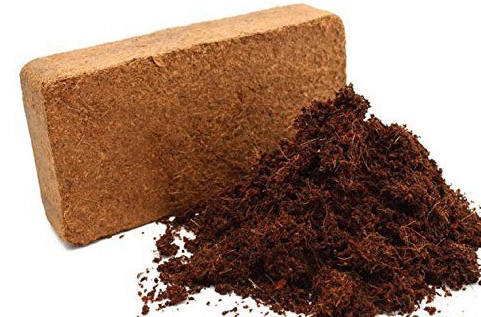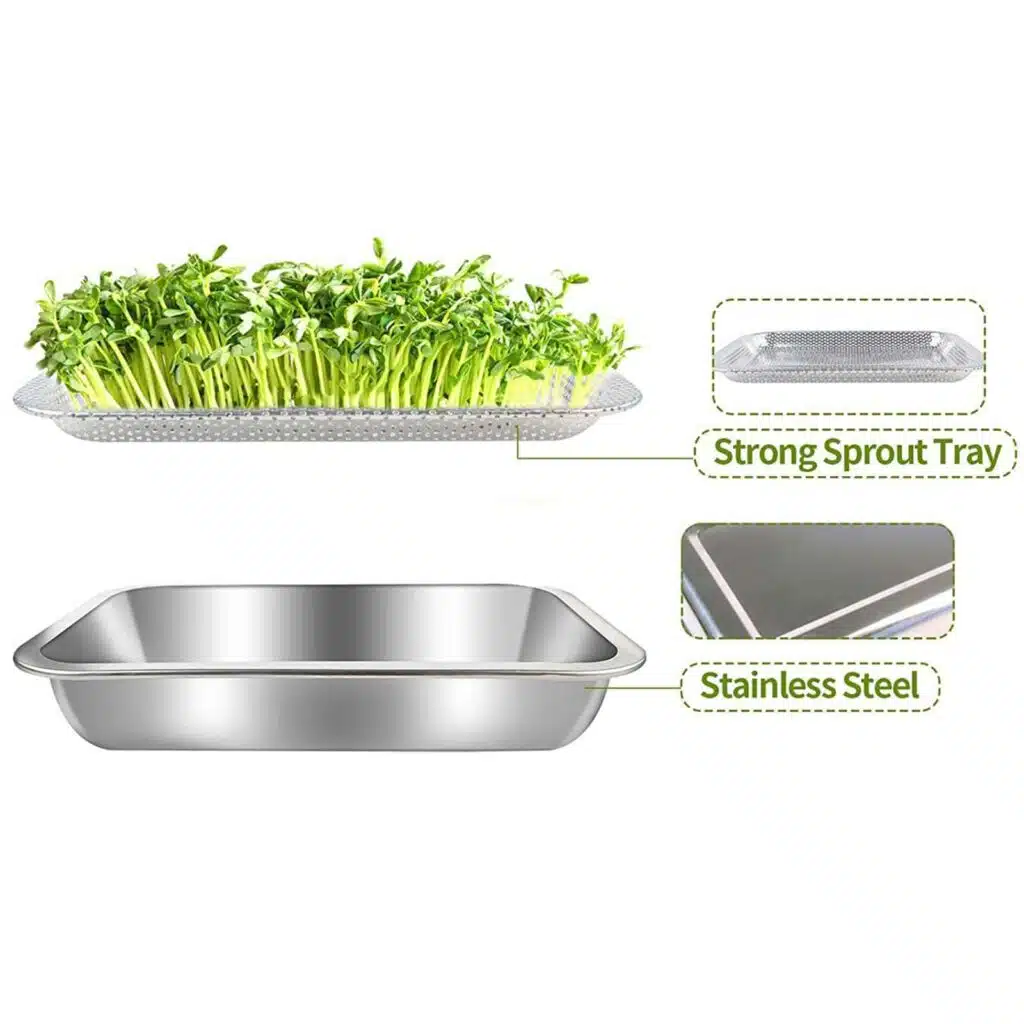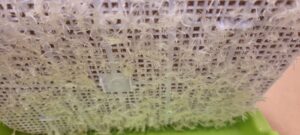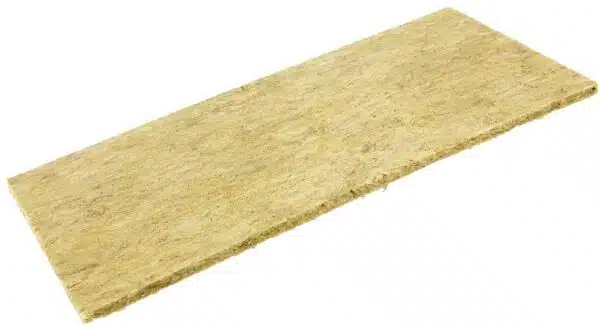By choosing the right soil for microgreens, you can improve your cultivation of these impressive plants that are true superfoods. Too few people realise the health potential of microgreens, even though microgreens can be 40 times more nutrient-rich than their full-grown counterparts. Such a concentration of nutrients makes microgreens an important source for our bodies.
This type of green has become a superfood and a big trend all over the world – and for good reason. One of the main reasons is that it is so easy to start growing and enjoying them.
Micro greens are small plants that are usually grown indoors and harvested after a few weeks when they are in their early stages of growth. To grow microgreens, it's important to choose the right growing medium to achieve the best results. In the article below, I'll discuss some of the most common growing mediums used for microgreens, what they consist of and their pros/cons.
Table of contents
ToggleSoil for microgreen cultivation
Microgreens are vegetables that are typically grown in small plastic trays and harvested when they are still in the small to medium germination stages. The plant seeds are placed in the tray on top of the growing medium or growing medium and are allowed to grow for 2-4 weeks, depending on the variety and growing conditions. When ready, they are harvested as small, flavorful and nutritious micro-vegetables.
The purpose of many of our articles is to teach you a lot about microgreens and how to grow them. Specifically in this article we will go in depth with the choice of "soil" for your micro vegetable garden, you can also see our Growing instructions for microgreens, if you want to learn more about the cultivation process of different microgreen plants.
We don't always use the term growing medium in relation to microgreens because what microgreens are grown in is often called a "growing medium". This is because the material microgreens are grown in is not necessarily real soil. In fact, microgreens are rarely grown in real garden soil. Instead, different soil substitutes with varying properties and names are used. However, their common name is growing medium.
You can read more about the different types of soil that will suit you best here
| Category | Key benefits | Disadvantages |
|---|---|---|
| Hemp mats | Sustainable, good water buffer. | More expensive. |
| Garden soil | Inexpensive, contains nutrition. | Requires sterilisation. |
| Coconut mulch / coconut soil | Environmentally friendly, good water retention. | Fertiliser. |
| Fiber mats | User-friendly, non-shrinking. | Price. |
| Metal/plastic mesh | Sustainable, efficient growth. | Customisation . |
| Rockwool | Sterile, full nutritional control. | Storage |
| Straw pills | Cheap, sustainable. | Watering. |
| Spagnum | Cheap, nutrient-rich. | Non-renewable. |
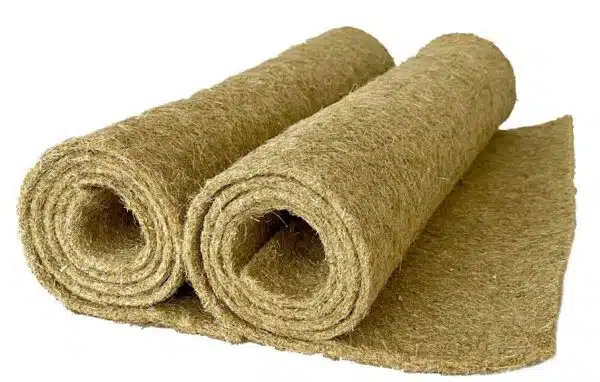
Hemp mats
What is it?
What hemp mats are made of is somewhat in the word itself, because they are mats produced from hemp fibers. Hemp mats are also sometimes used as door mats, but if you intend to use a hemp mat for growing microgreens, we strongly recommend that you buy one made specifically for this purpose. If the mat is made as a door mat, there are not as strict requirements for production, and there may therefore be hygienic problems when using them.
Advantage
- Sustainability: Hemp is a fast-growing, sustainable and environmentally friendly crop. Hemp mats are made from industrial hemp and are biodegradable and can be composted after use, making them an environmentally friendly choice.
- Good water buffer: Hemp mats have a good ability to retain water, which ensures that microgreens get the necessary moisture to grow.
- Air circulation: Hemp mats allow good air circulation, which helps minimize the risk of fungal and bacterial infections in microgreens.
- Purity: Hemp mats generally do not contain harmful chemicals or
pesticides and can be considered a safe and clean growing medium for
micro green. - Local: If you buy them from the right places, you can typically find some that are produced in Denmark.
- Adaptation: It's also very easy to get started, as you just have to cut it out and then put it in your micro green tray without any further hassle.
Disadvantages
- Price: Hemp mats can be more expensive than some other growing media, such as coir or soil-based potting mix.
- Durability: Hemp mats can tend to break down faster than other growing media, especially if exposed to excess water or strong lighting.
- Hemp mats have a relatively low absorbency, and therefore cannot absorb and retain nearly as much water as many other growing media.
- The low absorption capacity means that unless you pay attention to watering very frequently, you will get slow plant growth and a smaller yield.
- Inconsistent growth: Some microgreens may have difficulty growing evenly on hemp mats, depending on plant variety and growing conditions.
Our assessment of hemp mats
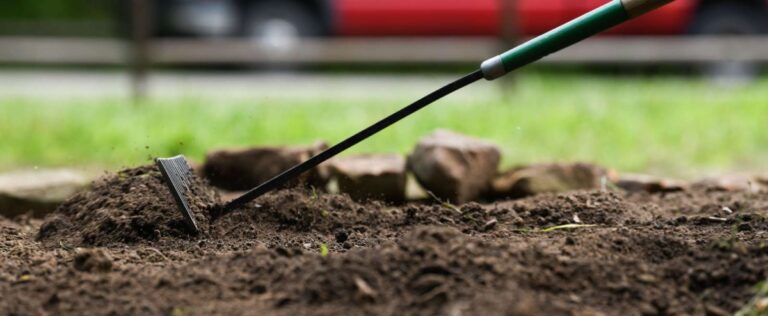
Garden soil
What is it?
Garden soil is probably one of the most available resources in Denmark. You can find regular garden soil in stores such as Bauhaus, but you can also just go out into your own garden, or in a field, and dig up some "fresh" garden soil for microgreens. But this is not something we recommend doing!
Advantage
- The primary advantage of having land is how cheap and easily available it is. It is therefore very easy for you to acquire garden soil for your microgreens project.
- Since garden soil is by no means sterile, it contains a lot of nutrients that your microgreens can utilize, this means that it is not as necessary to buy fertilizer as it is with many other growing media.
Disadvantages
- A major disadvantage of garden soil for microgreen cultivation is the lack of sterility. The fact that the soil is not 100% sterile is not normally a problem when growing fully grown plants, but it is a big problem in the area of microgreens. The impurity means that the risk of mold, rot, viruses, insects or other pestilences in your microgreens becomes drastically higher.
- It is possible to sterilize your soil yourself, but this is a difficult and not super environmentally friendly process, as it requires very high oven heat for many hours.
Our assessment of garden soil
Coconut mulch / coconut soil
What is it?
Coconut flour, also known as coconut coir or coconut fibre, is a natural, sustainable and environmentally friendly growing medium derived from the outer shell of the coconut and is our absolute favourite growing medium here at plantelys.dk. There are many good reasons for this, we even have a full article that explains why we are so happy coconut soil as we are, but if you'd rather have it summarized quickly, you can just read on here in the article to see the pros and cons.
Advantage
- Environmentally friendly: Peat and Spagnum free - the growing medium is made exclusively from leftover material from coconut production.
- Water retention: High water-holding capacity ensures necessary humidity.
- Airiness: Loose, airy structure promotes root development and increases oxygen availability.
- Drainage: Good drainage prevents overwatering and root rot.
- Sustainability: Environmentally friendly material and by-product of the coconut industry.
- Low EC: Get dissolved salts, which is important for the growth of microgreens.
- Ph neutrality: Suitable for growing various types of microgreens.
- Sterility: Rarely pests, diseases or weed seeds, making it safe and clean.
- Increased root growth: Promotes strong root growth due to porous structure.
- Lightweight: Ideal for small containers or indoor environments.
- Reusability: Can be recycled, composted or used as a soil amendment.
Disadvantages
- Low nutritional content: Can require extra fertilizer or nutrients to get the best possible yield.
- Quality variation: Can affect the growth of microgreens,
- Price: Is more expensive than potting soil, but you can't use potting soil without sterilizing the soil, so it levels out.
- Pretreatment: Reducing the salt content and adjusting the pH can be demanding if you have to do it yourself, so buy products that are already adjusted and only add water.
- Irrigation control: Can dry out quickly, and therefore requires some monitoring and adjustment (Not a problem if you use one sprouts hill with under tray for irrigation).
You can possibly see this video (English) to see the benefits of using coco peat mould/soil compared to garden soil
Our assessment of Coconut fiber
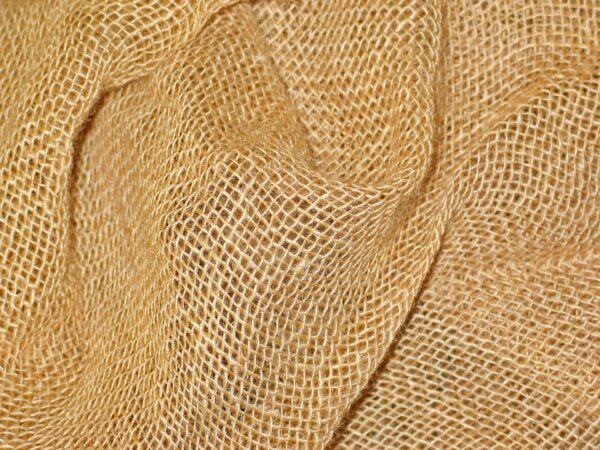
Fiber mats
What is it?
Fibre matting is a very large category that includes many different products. For example, hemp mats are simply fibre mats made from hemp fibres. Fibre mats can be made of many different fibres, so it's hard to talk about the exact advantages and disadvantages. You can get fibre mats made from coconut fibre, hemp fibre, among others, bamboo fibre, jute fibres or flax fibres. It is also possible to find some made with artificial fibres, although not as common.
Advantage
The smart thing about fiber mats is the user-friendliness and that it does not rot as much as "unstable" growth media. Mats can be very easily and quickly clipped into place and laid down in a tray, without spilling "soil" all over the place.
Disadvantages
The disadvantages are primarily the price, and other disadvantages vary depending on the fiber type.
Our assessment of fiber mats
Metal/plastic net (sprouting trays)
What is it?
Metal/plastic netting is in many ways a rethinking of the concept of growing microgreens. When growing some types of microgreens, you can get really good results with nets and with others it works really badly, depending on the size of the seeds and the size of the holes in the net. Large seeds such as peas, wheatgrass and sunflower seeds are particularly suitable for growing without a growing medium. If you want to use smaller seeds, you can use a growing medium such as coconut fibre in the bottom of the tray/net and place the seeds on top.
Cultivation with Metal/plastic net as its "growth medium" is a slightly more difficult process than it is with the common "soil types". The nets have no suction power, which means that you must be extremely attentive to the water level in your microgreen tray, you must try to ensure that the water level always reaches right up to the net, but not all the way up so that it hits the seeds, which are a very delicate balance to maintain.
It is also possible to use a water atomizer to atomize water and fertilizer on the underside of the net to bring water and nutrition without risking drowning the plant.
Advantage
- Very sustainable as the net can be washed and used almost forever
- Microgreens can have very effective growth on nets if done properly
Disadvantages
- Small seeds require some form of additional growth medium (e.g. coconut mulch)
- The type of the net's hole size must be different based on the type of seed
You can possibly see this video(English) if you want to learn more about growing with nets
Our assessment of Metal/plastic nets (sprouting trays)
Rockwool
What is it?
Rockwool is both an insulation product and the name of the Danish company that produces it. "Rock wool" means rock wool in Danish, and is artificial mineral wool made from water and fibers from different types of rock.
Advantage
- Like coconut soil, rockwool is almost completely sterile, which is really good for hygiene and for healthy plants.
- The sterility also means you have 100% control over the fertiliser/nutrient composition so you can adapt it to suit exactly the needs of your plant.
- Rockwool is probably the cheapest growing medium you can find, at least if you look at the kg/krona or L/krona price. However, since rockwool is typically sold as insulation, it comes in very large packages. So unless you know someone who has some rockwool left over from a renovation project, you probably have to buy a very large amount of rockwool, but then you also have land for microgreen production for many years.
Disadvantages
- Since it is necessary to buy it in very large quantities, it takes a lot of space to store it until you have used it all up, which could easily end up taking several years.
- It is also a relatively new idea to use the product as soil for microgreens, so there are not that many places you can find help.
You can read more in depth about rockwool here from some of our international colleagues
Our assessment of Rockwool
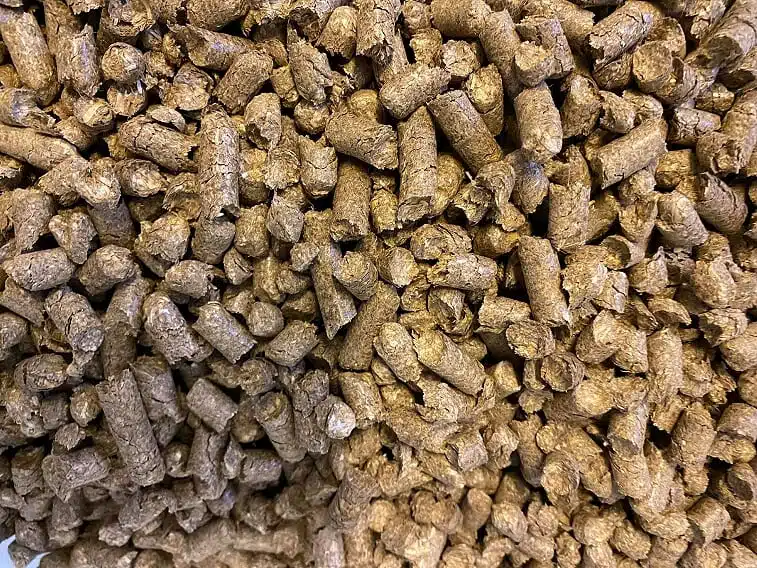
Straw pills
What is it?
Straw pellets are one of the most sustainable types of soil for microgreens. Straw pellets/straw soil for microgreens has a lot in common with coconut mulch, both large parts of the production method, but also many cultivation characteristics. For example, both straw and coconut soil must be soaked to absorb water before sowing, but boiled water can be advantageously used to ensure extra sterility.
We have not started selling straw pellets for cultivation ourselves, but we are conducting internal cultivation tests to see if it is as effective as coconut soil. Both soil types are roughly equally sustainable, but although coconut soil has an extremely affordable price, granulated straw pellets are a bit cheaper.
It would therefore be extremely advantageous if it turned out to live up to our high requirements for plant growth. So far, the results look promising, and it seems to give good growth, however, it has a strong smell, and is therefore probably not suitable as a growing medium in living rooms or kitchens. But maybe you will soon be able to see it here on the site, as a more affordable alternative to ours coconut soil!
Advantage
- Cheap: Straw pellets can be bought in large bags, and are therefore cheap to buy.
- Sustainability: Straw pellets are sustainable and environmentally friendly as they are made from straw, an agricultural waste product.
- Drainage: Straw pellets help against overwatering and rot due to good drainage.
- Airiness: Porous structure in straw pellets ensures air circulation around the roots
- Reusability: Straw pellets can be composted and reused as a soil conditioner
Disadvantages
- Nutrient content: Straw pellets contain fewer nutrients than other growing media such as coconut mulch or soil.
- Water retention: Straw pellets require more frequent watering.
- Bad smell: Wet straw has a strong and unpleasant smell, which can affect the smell and taste.
- Not sterile: Straw pellets can contain pests, diseases or weed seeds if not treated properly. This makes it mold easily and damages the yield.
Our assessment of Straw pills
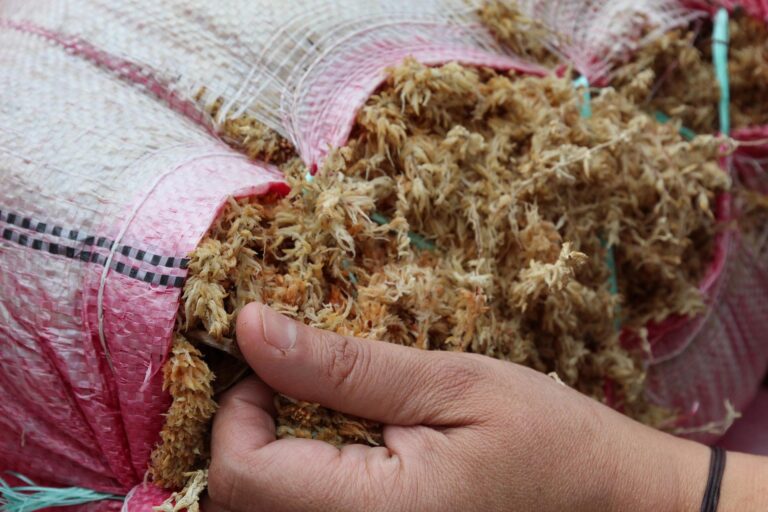
Spagnum
What is it?
Sphagnum is old peat moss that is dug up from bogs or nutrient-poor lakes through an environmentally damaging process. Sphagnum is not a renewable resource like straw pellets or coconut soil for microgreens, because there is no new natural sphagnum where we dig it up, and it is not something we can grow ourselves. On a global scale, however, we can probably dig up sphagnum for a few hundred years before we run out completely. Large parts of Russia, Finland and Canada consist of sphagnum bogs.
But for smaller countries like us here in Denmark, we are soon on our way to having emptied all raised bogs of sphagnum, and recently environmental scientists have become aware that the violent emptying of the Danish bogs for sphagnum collection has very serious environmental consequences, among other things, it causes a loss of a rare and irreplaceable biotope and fauna.
Spagnum is unfortunately very popular as a soil conditioner among many nurseries and private growers. Many people also choose to use sphagnum as soil for microgreens, we cannot recommend this either. The first reason is of course the climatic complications, here at plantelys.dk we are very keen to be as sustainable as we possibly can, and therefore we cannot support the use of sphagnum.
The second reason is that sphagnum is not even particularly good as a growing medium/soil for microgreens. It has almost all the same disadvantages as using normal house soil for growing microgreens. It is in no way sterile, and can contain many harmful things for your plants. On the other hand, there are many natural nutrients in it. But all these other disadvantages should be reason enough to simply use some fertilizer instead, as well as another significantly more sustainable type of soil for microgreens.
Advantage
- Can be bought cheaply in large packages
- Contains many nutritional sacrifices
- Is good at holding water
Disadvantages
- Bad as soil for microgreens
- Non-renewable resource
- The extraction destroys the natural habitats of animals
- May contain diseases
- Higher risk of mold or fungus
Our assessment of Spagnum
Conclusion
When it comes to the best soil for microgreens, there is no definitive answer. There are a few soil types, i.e. growing media, which are better than ardre, but there is no one that is the clear winner, as it depends on the situation.
We give first place to coconut fiber, which has most of the good properties and is extremely good for plant growth.
Number two goes to sprouter trays/netas it is a solution that can be reused many times, making it a very environmentally friendly choice.
In third place we find hemp mats, as they are easy to work with and are environmentally friendly.
If you need help or want to know more, you are more than welcome to contact us team of experts. We can help you with everything from fertiliser, soil to microgreens, plant lights or lamps for your kitchen and underwater fish farm lighting.
